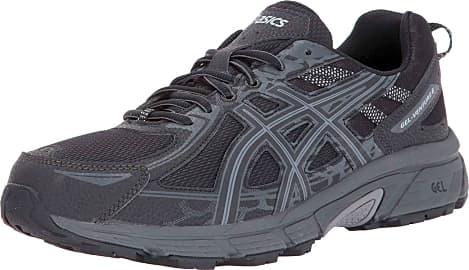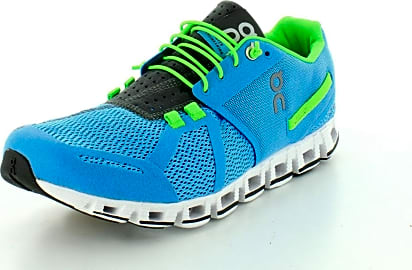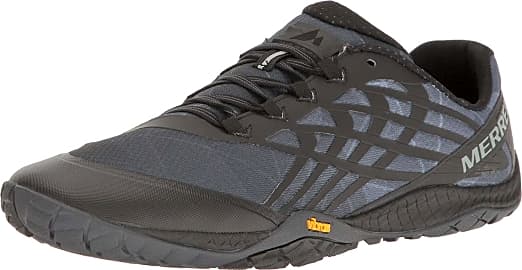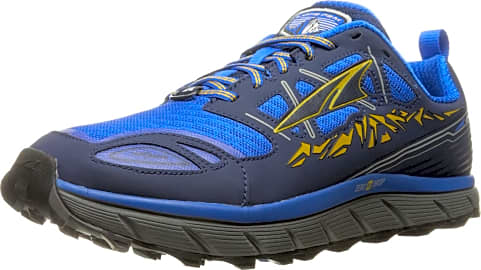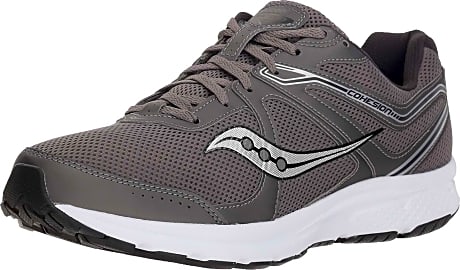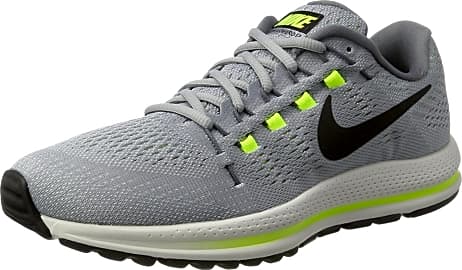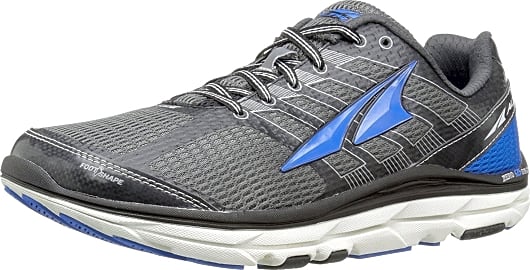The 10 Best Men's Running Shoes

This wiki has been updated 47 times since it was first published in May of 2015. Without a decent pair of running shoes, there's a good chance that fatigue or injury will cut your marathon short well before the finish line. Keep yourself safe, comfortable, and in proper form with one of the selections ranked on our comprehensive list. And remember, even the best models ought to be replaced every 300 to 500 miles, so be sure to come back when it's time for an upgrade. When users buy our independently chosen editorial picks, we may earn commissions to help fund the Wiki.
Editor's Notes
June 06, 2019:
One primary consideration divides several of the options listed here: the question of padding and support. The recent minimalist footwear trend has led some designers to strip almost all cushioning from their shoes in order to force the foot to work harder, thereby building up musculature in the foot and ankle.
We have a few such options ranked here, including the Merrell Trail Glove 4 and the Altra Provision 3 Road. Both feature very little drop from the heel to the toe, and there's little support for the arches. They also have wide toe boxes to enable your piggies to spread out as you run.
If that doesn't interest you, however, most of the other options are more traditional. Several come loaded with features designed to take as much strain off your dogs as possible, like the Phylon forefoot on the Nike Air Max Torch 4. The jury is still out on traditional vs. minimalist, scientifically speaking, so it's up to you which one you prefer. Just listen to your body and don't push yourself if things start to hurt.
Special Honors
Adidas Y-3 Runner 4D II The digitally-printed midsole on this pair is created using oxygen and liquid resin, which purportedly helps sustain the energy created by each footstep, reducing fatigue. Of course, they're attractive enough you may never want to actually take them out on the track. y-3.com
Balenciaga Track LED No one will miss you in these stylish light-up shoes, as the heel flashes to alert drivers and other passers-by of your presence. The rear of the shoe is augmented to push you forward, helping you to pick up the pace and beat your record time. balenciaga.com
Thom Browne Raised Although the designer's wares are more commonly associated with fashion than with athletic endeavors, these can actually help improve your evening run in addition to brightening up your everyday style. The flexible, elevated rubber sole provides ample cushioning and support. thombrowne.com
How Does a Men's Running Shoe Work?
This type of shoe will help you build your leg muscles while simultaneously controlling your stride.
Have you ever run outside barefoot, particularly on asphalt or gravel? If so, you've noticed the way a grainy surface feels against your foot, along with the way your stride involuntarily stiffens up to keep from injury.
That's where running shoes come in. They provide cushion - and bounce - so that your foot can naturally spring off of the ground.
A running shoe is also designed for absorbing shock, thereby alleviating any significant stress to your legs.
Many running shoes are built to keep your body from having to do too much work. That is to say the sole and the shoe work together to ensure your foot remains stable, as opposed to rolling too far inward or outward with every stride.
If you're an inexperienced runner, chances are you'll want a shoe that provides support. This type of shoe will help you build your leg muscles while simultaneously controlling your stride.
The best way to gauge a shoe's support is by pressing your thumb into the rubber foam along the base. Most lightweight shoes are comprised of a thin layer of foam that your thumb can easily dent. Shoes that are reinforced for stability tend to have a stronger rubber sole that proves a lot more resilient to the touch.
What Do I Need to Know Before I Buy a Pair of Running Shoes?
A lightweight shoe with a narrow sole is generally made for racing. A heavier shoe is generally made for distance running. When choosing a shoe, you want to zero in on a model that was built with the right combination in mind.
Many experts believe the best way gauge this is by determining your level of pronation (I know ... pro-what?). Pronation refers to how far your foot rolls inward after it strikes the ground. The average runner initially lands on the outside of his heel, causing his foot to pronate approximately 15% before pushing off again.
Shoes like this will keep your stride in-line, allowing you to avoid a lot of the conditions listed above.
Pronation is critical to shock absorption, which is, in turn, equally essential to enjoying each run.
Look at the sole of your shoes. Do you see a lot of wear toward the inside ball of both feet? This is an indication that you over-pronate. That is, your feet tend to over-roll when striking the ground - a dynamic which has been known to cause blisters and bunions, as well as muscle strains and tendinitis (the list goes on and on). No worries; there's a simple fix.
You need to look for a pair of shoes that have strong stability and motion control. Shoes like this will keep your stride in-line, allowing you to avoid a lot of the conditions listed above. On the same token, if you under-pronate (i.e., look for wear along the outside of both soles), you'll want to look into a lightweight pair of shoes that allows more flexibility.
This, along with stretching, will help you avoid shin splints and stress fractures, and an entire array of painful conditions.
Keep in mind that if your shoes show wear toward the heel at the center of the foot, you more than likely have neutral pronation, which means you're good to go.
A Brief History of the Men's Running Shoe
The first athletic shoes were known as "plimsolls" (named after the plimsoll line of a boat's hull) and were used for leisure activities and vacationing.
These shoes soon found their way onto the tennis courts and cricket pitches of the UK, where laces were added and rubber soles were reconfigured for grip.
The first major boon in plimsolls came during the early 1900s, when British elementary schools made them a necessary part of the physical fitness uniform.
The point being, whatever your needs are, there is a running shoe out there for you.
The first pair of running shoes had been designed just prior - in 1895 - by a British company known as Foster & Sons. These shoes differed from the average plimsoll in that they featured metal spikes, which are still used for traction on the soles of certain outdoor running sneakers today.
While sneakers began catching on in certain regions of the U.S., running shoes didn't really make their mark on U.S. soil until after World War I, a point in which athletics evolved into a way for countries - and countrymen - to compete for bragging rights and superiority.
The rise of professional sports brought with it celebrity endorsements, and by the 1950s, traditional sneakers weren't only being used for athletics, they were also growing into an acceptable form of footwear for any non-formal affair.
The watershed moment for running shoes came in 1964, when Oregon running coach Bill Bowerman, and businessman Phil Knight created Blue Ribbon Sports, which would eventually balloon into Nike, Inc.. Bowerman was obsessed with the mechanics of running, and as the story goes, he spent years in his garage, constructing lightweight rubber soles with the imprint of a waffle iron.
These prototypes, which were originally worn by Oregon University track runners, would later become the Nike Waffle Racers, an immensely popular men's racing shoe that revolutionized the business.
Between the 1970s and today, the running shoe industry has exploded. Some of that is due to the global fitness craze. Another part of it is due to the tremendous rise of women runners.
Twenty-first-century running shoes are highly specialized, and technologically engineered for very specific forms of exercise. The point being, whatever your needs are, there is a running shoe out there for you.



